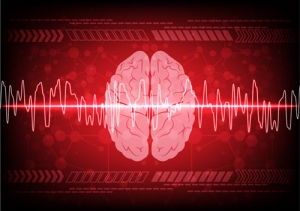Exploring stroke types: Hemorrhagic Stroke
- Category: Blog, Neuromedicine, News
- Posted On:
- Written By: King's Daughters Health

Last week, we talked about Transient Ischemic Attacks, or “mini-stroke." This week, we’ll focus on hemorrhagic stroke. Only about 15 percent of all strokes are hemorrhagic, but they cause about 40 percent of all deaths from stroke. The word “hemorrhage” means the escape of blood from a ruptured blood vessel. When a hemorrhage happens in the brain, the blood pools, causing swelling and pressure. This can destroy brain cells.
There are two types of hemorrhagic stroke: intracerebral and subarachnoid. Of these, intracerebral stroke is the most common. It occurs when a blood vessel inside the brain bursts. Brain cells in the area die and the functions associated with that area are affected. Intracerebral stroke is most often caused by high blood pressure and age, although it can also be caused by head trauma. If you have high blood pressure, it’s important to work with your healthcare provider to keep it under control.
Occasionally, intracerebral hemorrhages are caused by a congenital defect called an arteriovenous malformation, or AVM. These are described as a “tangle” of blood vessels, with strange links between arteries and veins. AVMs most often occur in the brain or the spine and can be successfully treated, if they are found before rupture. AVM symptoms may include seizures, headache or pain in one area of the brain, and muscle weakness or numbness in one part of the body.
The other main type of hemorrhagic stroke is called a subarachnoid hemorrhage. In this type of stroke, bleeding occurs not within the brain itself, but between the brain and the tissue that covers the brain, called the meninges. The middle layer of the meninges is called the arachnoid mater, because it looks like a spider web. A subarachnoid stroke is almost always caused by a ruptured blood vessel. Other causes can include an AVM, a bleeding disorder, head injury, or blood thinners.
Hemorrhagic stroke signs
Warning signs usually begin very suddenly and evolve over several hours and include headache, nausea and vomiting, and altered mental status.
When the stroke is a leaky subarachnoid type, warning signs can begin a few days to a month before rupture and include abrupt headaches, nausea and vomiting, sensitivity to light and neurological changes. When the vessel ruptures, the individual may experience a terrible headache, neck stiffness, vomiting, altered mental state, vision loss, stupor, rigidity or coma.
Stroke is a serious medical emergency. Should you or someone you know experience the signs and symptoms of stroke, call 9-1-1 and have them transported to the nearest emergency room immediately. Time is of the essence.

